In Cambodia’s Prey Lang forest, a community goes after loggers.
In the dark of night, the glow of a fire leaves a faint light on faces weary from days of walking in the jungle. Ten people lie awake in a makeshift camp, hoping for a strong breeze to fan the dying fire.
Voices carry from the distance, broken occasionally by the persistent sound of chainsaws: loggers working under the cover of darkness. Tonight, they will cut down trees until their truck is full or they get tired and stop to catch a few hours of sleep.
Cambodia’s northern Prey Lang forest is one of the last evergreen forests in Southeast Asia. Spanning four provinces and covering 3,600 kilometers squared (1,400 miles squared), Prey Lang is also considered the largest evergreen forest in the country and likely the most expansive in the region.
In the dialect of the Kuy minority, Prey Lang means ‘our forest.’ At the edge of the forest, the village of Phneak Rolerk – a relocation site for the Kuy minority during the Khmer Rouge period – is now home to over 100 families.
The community has been living here for at least two generations. They make their living in the forest, which provides farmland, food, medicine, rattan, vines and other natural products. It was sustainable. Until the loggers arrived.
“Prey Lang was full of precious wood. This led companies to come here and cut the precious trees,” says Phouk Hong, a local activist and mother of five. “You start to realize what is going on when your livelihood is threatened. My family and I lived off the resin trees; now that they are less, we need to organize ourselves to protect them.”
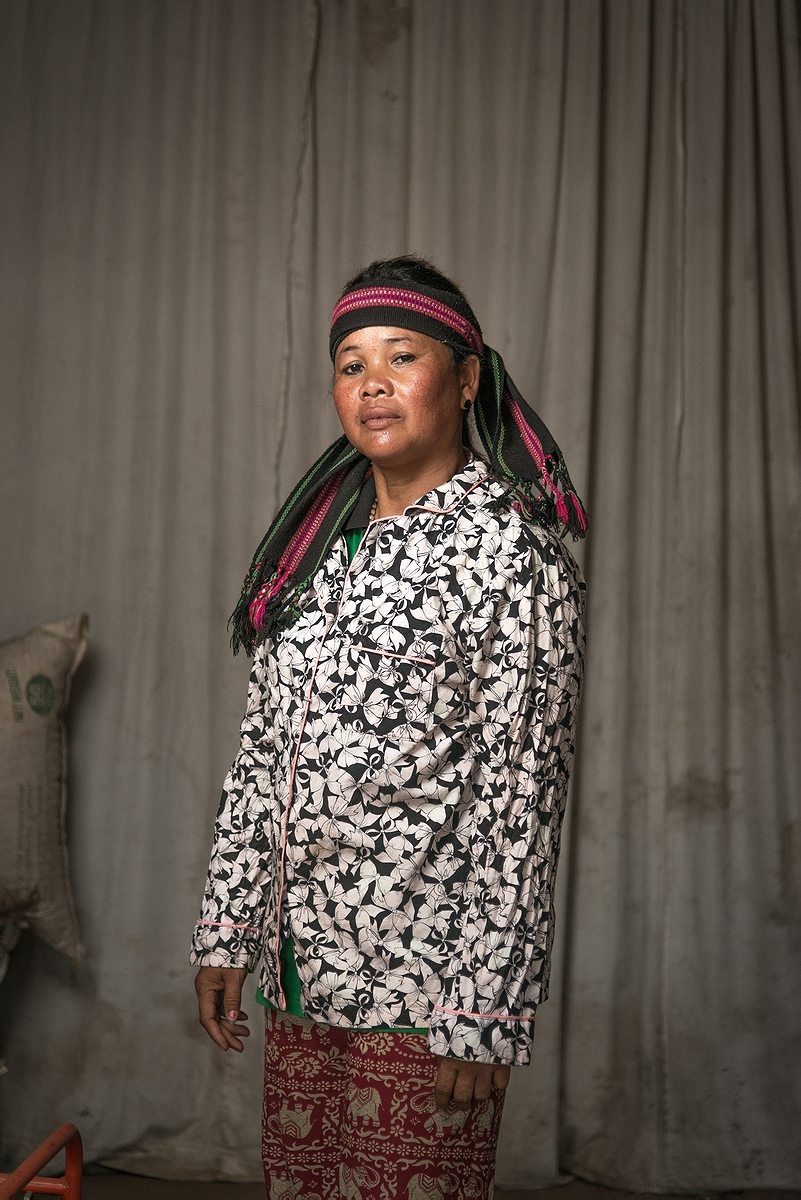
In recent years, the Cambodian government has granted at least 12 Economic Land Concessions in Prey Lang, allowing logging companies to work in the forest. A report from the organization Global Witness found that China’s demand for luxury rosewood has given rise to a multi-million dollar timber smuggling operation in Cambodia. Experts say that these companies often start logging outside the boundaries of their concessions.
There’s a lot at stake. The forest plays a critical role in the Mekong and Tonle Sap Basins according to the United Nations Development Programme. Tonle Sap is one of the world’s most productive freshwater ecosystems, so much so that the lake is known as Cambodia’s beating heart. The loss of Prey Lang would affect at least 1.5 million people in the area. In response, the communities who call the forest home are fighting to protect it, taking loggers on one camp at a time.
The Prey Lang Community Network includes 339 communities over four provinces. Funded by foreign organizations and governments, the network tries to get public attention with protests and petitions, maps endangered areas, and conducts biodiversity surveys to document disappearing species. Every other week, they go after small groups of loggers.

Back at the camp, the patrol is split about what to do next. Some want to leave the camp now and catch the loggers in the act, but that could be dangerous. “Safety comes first. At night, we cannot access nor see anything,” says Hong. “We don’t know if the loggers possess any weapon or gun, and we are not enough to patrol. We should wait until the morning.”
But no one can sleep with the din from the loggers’ chainsaws. They lie in the darkness, hoping that the sun will rise and shed light on the strangers stealing Prey Lang’s trees. It is still dark when the patrol begins to pack up camp.
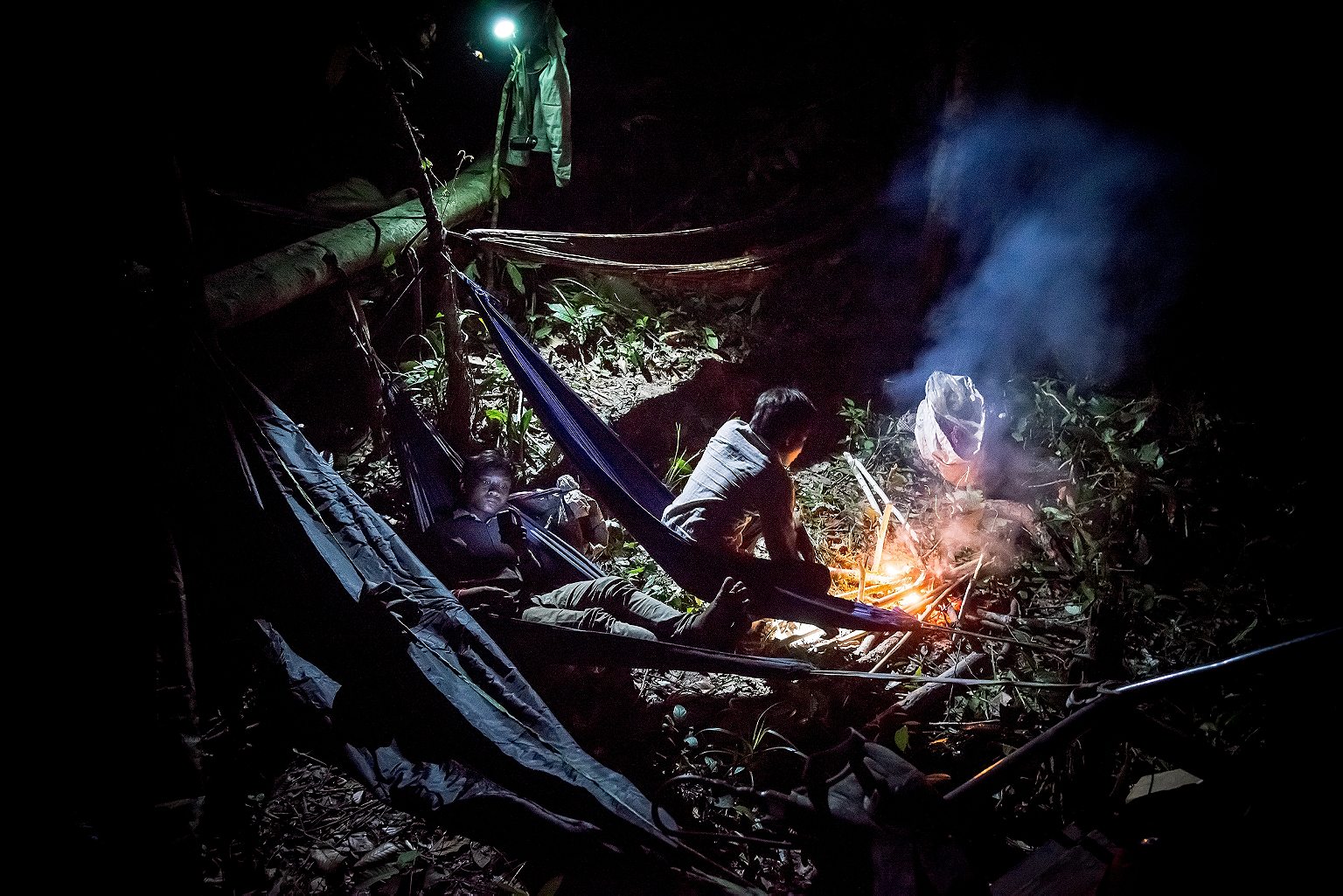
Hong’s eyes sparkle as she explains their strategy: “We will leave now and walk until we reach the loggers’ area. At that point, we will split in teams to surround them, guided by the sound of their chainsaws. When the signal is given, we will all rush in.” The chainsaws get louder as the patrol quietly inches closer. Suddenly, they break into a full run.
There are just two loggers. All of their equipment is quickly seized. “We confiscate knives, axes and chainsaws. Everything that they can use against us and allow them to react violently,” Hong says, struggling to catch her breath.
The patrollers then take the names of the two loggers and have them sign an agreement with thumbprints. They promise to never cut down trees in Prey Lang again. The Prey Lang Community Network does not have any authority to arrest the loggers or store the wood and chainsaws. But they carefully retain these signed documents, hoping they will make a difference.
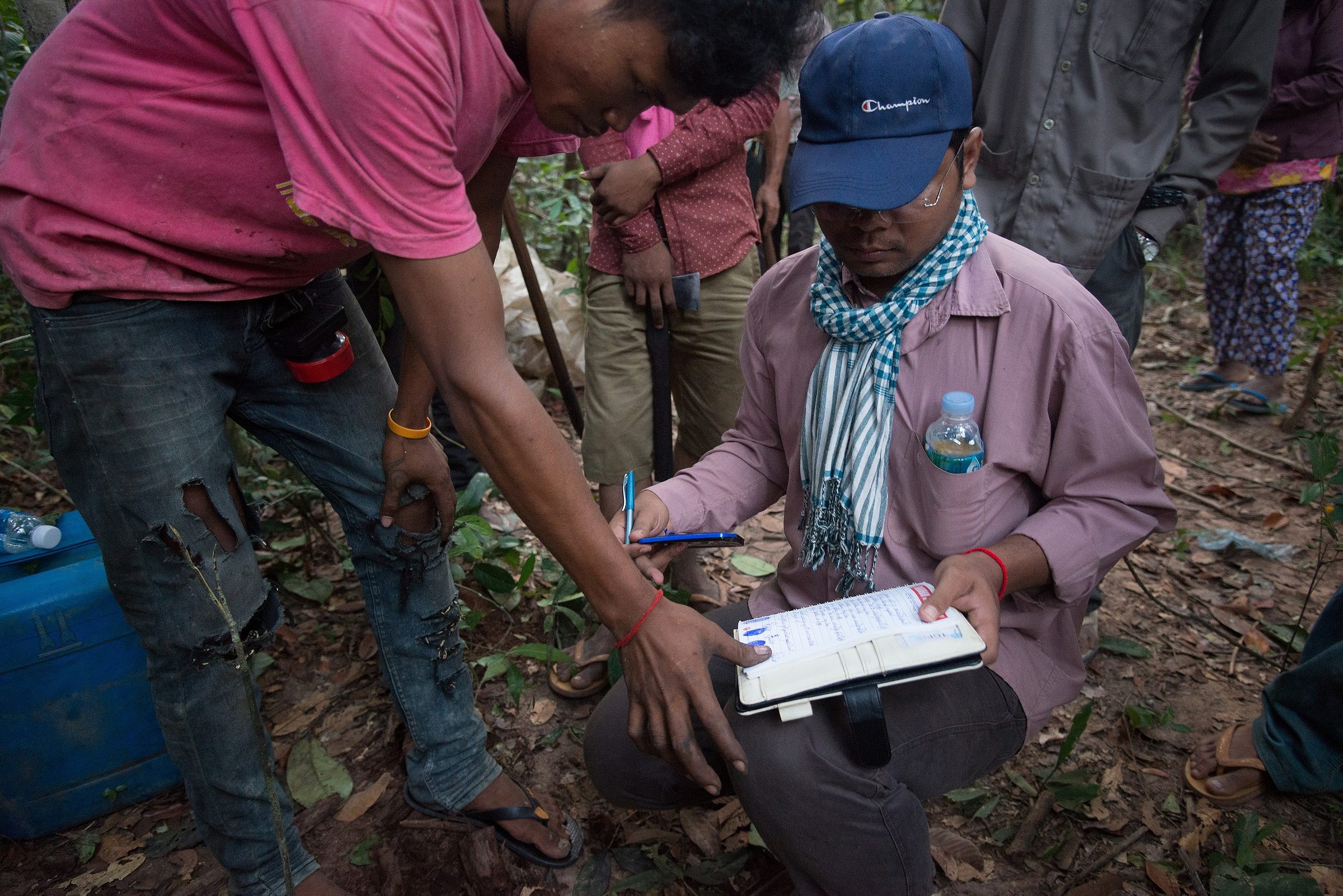
“When wood is confiscated, we inform the local pagoda about it and everything is delivered there,” says Hong. We have had very bad experience with the local authorities in the past. They never collaborate with us to protect the forest, even if it is their duty. When we trust them and give them what we confiscated, they generally gave all equipment back to the loggers. The community is doing the government’s job.”
Knowing the authorities won’t do anything to deter the loggers, the members of the patrol saw through the freshly cut wooden planks the loggers leave behind to destroy them. Then they pour acid into the motors of the chainsaws to destroy the internal mechanisms. They work in big groups and surround the loggers so they’re less likely to be confronted with violence. “We all do this together,” Hong says.
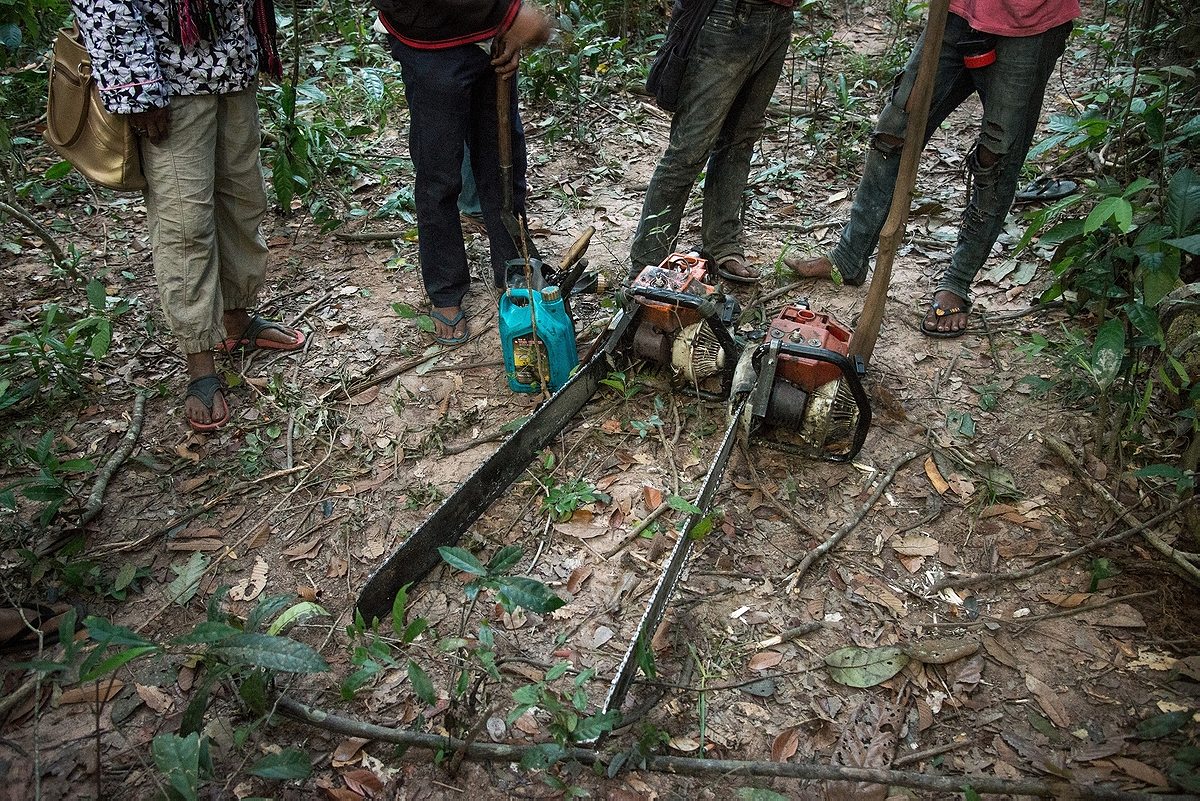
Hong has even enlisted younger members of the community. Her 23-year-old nephew Loun Keuth has been actively involved in the protection of Prey Lang since he was a child. “At first, I was scared,” he says. “But now I am not afraid anymore.” Keuth is quiet and fast on patrol, and takes his smartphone everywhere.
“When we go to Prey Lang, the first thing I do is turn on my phone’s GPS tracker,” he explains. “That way, every time I take a picture, I know its exact location.” He also posts the photos to Facebook so there’s a record of what the patrols see and do.
Keuth is part of an emerging generation of forest activists who use social media to raise awareness. “Posting on Facebook is really helpful because we can publish proof of illegal logging,” he says. “I believe that if people see what is going on with their own eyes, they will take an interest. This is not only addressed to foreigners, I also want to let other Cambodians know how much of the Prey Lang forest is still standing.” By September 2015, the Network had recorded at least 2,000 crimes in the forest.
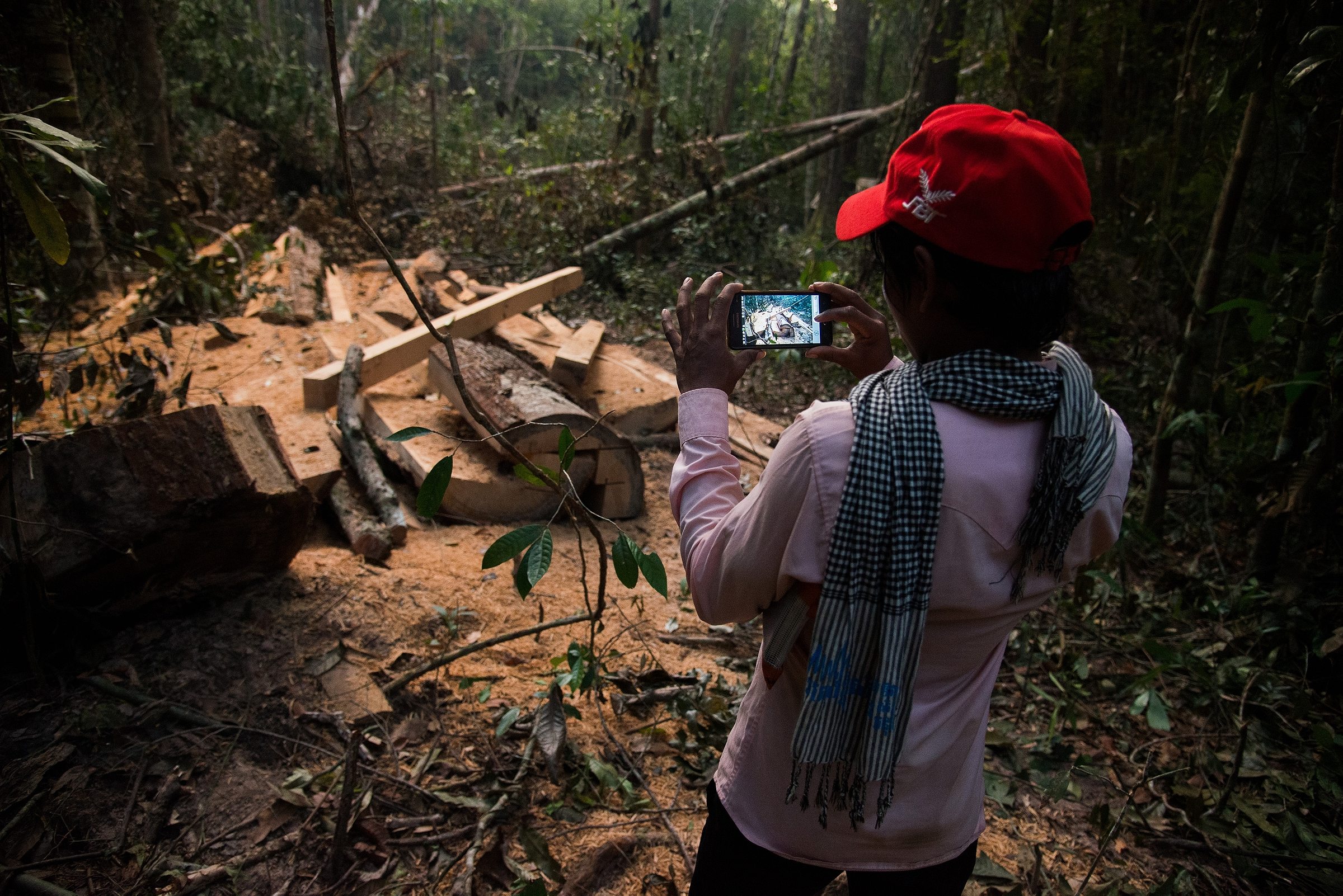
“This approach really only works on small teams of loggers,” says Fran Lambrick, an environmental scientist who has been studying the Prey Lang forest for five years. “The bigger fish, the ones logging illegally for large companies, are organized differently. They have moving sawmills, powerful political backers, and they treat the forest as if it is their own property.”
Going up against the loggers is getting more and more dangerous. The death of Chut Wutty, a prominent environmental activist who was killed in 2012, still weighs heavily on the community. More environmental activists are being arrested, and even killed. Hong has been threatened by local authorities, but she plans to keep working. “If we do not take care of the forest, who will?”
Ruom is a collective of photographers, journalists, videographers, and researchers, drawn together by a passion for social documentary work. It is a space to collaborate on regional and international projects with the aim of giving voice to global issues that may be underreported by the mainstream media. For more on this story, watch the video “Vanishing Roots” by Thomas Cristofoletti below:
Funding for this story was provided by the Earth Journalism Network.